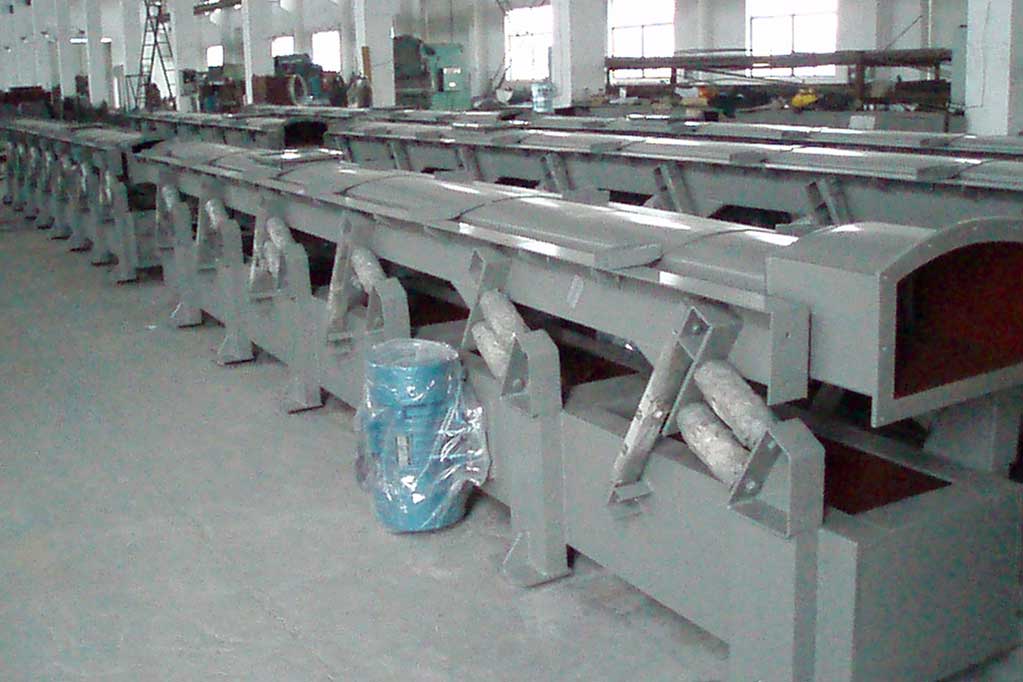Basic Types and Selection of Material Vibrating Conveying
Vibrating conveyors, vibrating feeders, and vibrating screens convey materials through the vibration of the chute. There are two basic ways for materials to vibrate in the chute: sliding motion and throwing motion. As long as the kinematic parameters (amplitude, frequency, vibration direction angle, and installation inclination angle) of the vibrating conveyor, vibrating feeder, and vibrating screen are properly selected, the materials in the chute can be transported in any of the above ways.
Two Methods of Vibrating Conveying
- Methods 1#: Sliding motion: The material is always in contact with the bottom of the chute. In each vibration cycle of the chute, the material slides forward a small distance along the bottom of the chute. Therefore, when the chute vibrates continuously at a certain frequency, the material can be continuously transported out of the chute.
- Methods 2#: Throwing motion: Sometimes the material is in contact with the bottom of the chute, and sometimes it is separated from the bottom of the chute, that is, the material is sometimes thrown forward and upward by the chute body, making a parabolic motion, and then falling back to the bottom of the chute. Every time the material is thrown up, it will move forward a small distance, so as to realize the continuous conveying of the material.
How to choose the motion mode in the design of a vibrating conveyor
When designing vibrating conveyors, vibrating feeders, and vibrating screens, the selection of the above two vibrating conveying methods or the state of material movement mainly depends on the abrasiveness of the material, the requirements for conveying speed, and the requirements for preventing the material from breaking itself. The type of vibration mechanism and the trajectory of the working surface, etc.
Two options according to material requirements
- Options 1#: When it is used for conveying fragile materials or powdery materials that are not allowed to be crushed, the conveying mode of sliding motion or the state of sliding motion is often used, but in this state, vibrating conveyors, vibrating feeders, and vibrating screens the chute body is susceptible to wear.
- Options 2#: When it is used for the transportation of materials without special requirements for crushing, the conveying mode of throwing motion or the state of throwing motion is usually selected. Because in this state, the wear of the vibrating machine chute is lighter, and the conveying speed of the material is generally higher than that in the sliding motion state, so most vibrating conveyors, vibrating feeders, and vibrating screens usually use the throwing motion state.

4 options according to the nature of the vibrating conveyor
The choice of material conveying method is also related to the type of mechanism of the vibrating conveyor, vibrating feeder, and vibrating screen and the trajectory of the body.
- Options 3#: For the connecting rod vibrating conveyor, the conveying method of sliding motion or throwing motion can be adopted;
- Options 4#: In inertial and electromagnetic vibrating conveyors, vibrating feeders, and vibrating screen mechanisms, the conveying method of throwing motion is usually used.
- Options 5#: For the vibrating screen with linear motion or the vibrating screen with an elliptical motion similar to a straight line (linear vibrating screen), materials can be conveyed in the state of sliding motion or in the state of throwing motion;
- Options 6#: For the vibrating machine with a circular motion and the vibrating screen with a circular motion similar to the circle (circular vibrating screen), usually, only the conveying method of monthly throwing motion is adopted, because the vibrating screen cannot obtain a large conveying speed in the case of sliding motion.
After the material conveying method is selected, the kinematic parameters suitable for the moving state of the material can be further determined, that is, the vibration amplitude, vibration frequency, vibration direction angle and installation of the vibrating conveyor, vibrating feeder and vibrating screen chute inclination.